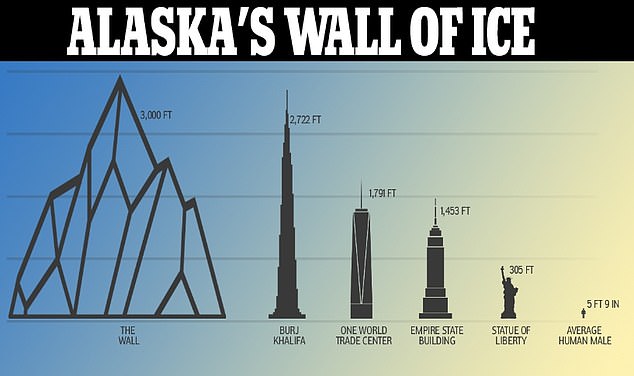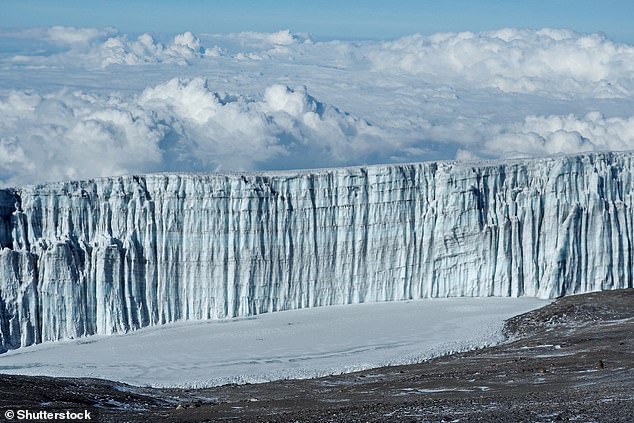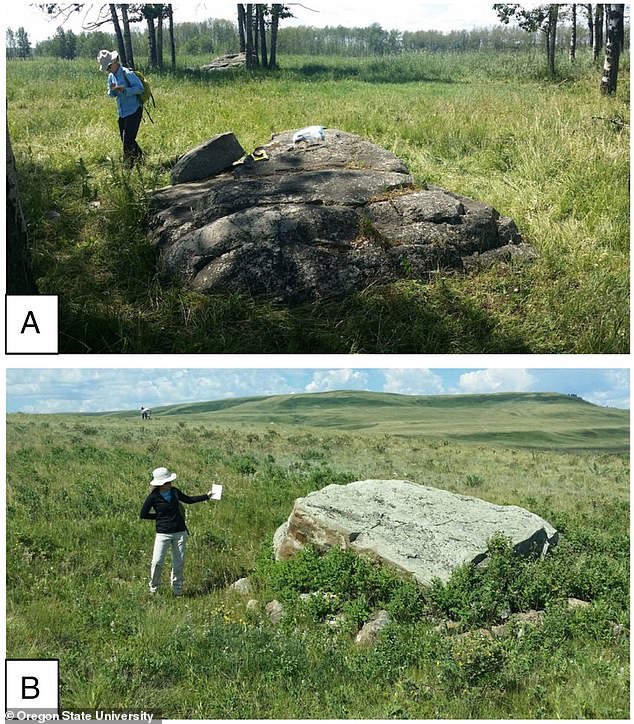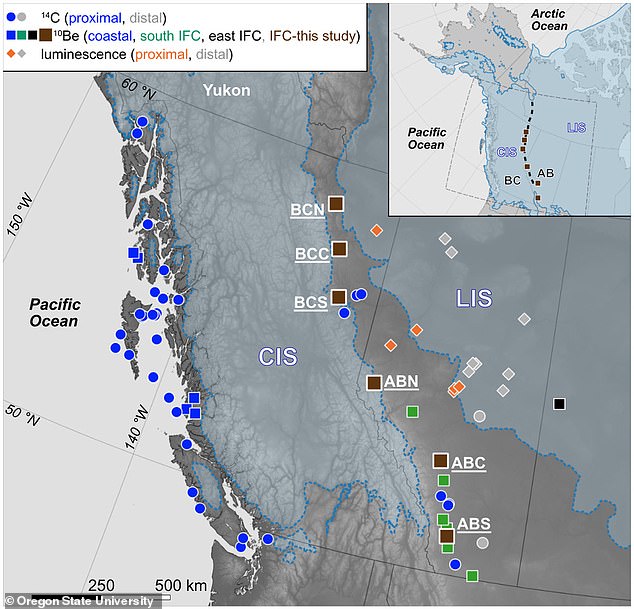The first humans to move into the Americas came by sea rather than over a land bridge, according to a new study, which found that a giant 3,000-foot tall wall of ice blocked their way.
For a long time there have been two main theories of the way people first migrated into North America – over a land mass called Beringia that once connected Asia with North America, or by travelling along the Pacific coast in small watercraft from Asia.
Whether they travelled into North America over land depends on whether Beringia actually had an ice-free corridor, allowing travel down to the Great Plains.
A footprint and stone artifacts discovered by scientists suggest the first humans arrived in what is now New Mexico about 23,000 years ago, and central Mexico 26,500 years ago.
To find out whether they came by land or sea,a team from Oregon State University set out to determine exactly when the ice-free corridor opened up.
They found that the corridor was not fully open until about 13,800 years ago, with ice sheets up to 3,000ft tall where the corridor would later appear, meaning that – because humans arrived more than 10,000 years earlier – they had to have arrived by sea.
Those first migrants, trying to cross by land, would have been confronted by a Game of Thrones-esque wall of ice taller than the world’s tallest building, the Burj Khalifa in Dubai which stands at 2,722ft, making the crossing impossible.

The first humans to move into the Americas came by sea, rather than over a land bridge, according to a new study, and a giant 3,000ft wall of ice blocked their way


For a long time there have been two main theories into the way people first migrated into North America – over a land mass called Beringia that once connected Asia with North America, or by travelling along the Pacific coast in small watercraft from Asia. Stock image
The research is the latest in a series of studies discounting the long-held ‘Clovis First’ theory, that says people first arrived in America from Siberia along an inland ice-free corridor that formed after the last ice age.
This corridor is said to have run along the eastern front of the Rocky Mountains, but how early it opened has been in doubt – putting the Clovis First theory in doubt.
The research team – led by Jorie Clark of Oregon State University and including Dr Dylan Rood and Louise Guillaume of Imperial College London – found that the corridor between the two ice sheets did not open fully until about 13,800 years ago.
This is when the two ice sheets covering much of North America during the last ice age melted and retreated north.
Previous studies of early stone tools found in the Americas, dating back 13,400 years, led archaeologists to believe the Clovis people, were the first migrants from Asia into North America, but this idea is widely disputed.
This is roughly inline with dates placed on the opening of the ice-sheet corridor, but recent archaeological digs have found much earlier remains in North America.
These were from pre-Clovis civilizations, with one 2021 study of 60 ancient footprints in New Mexico dating human presence back 23,000 years ago, and a 2020 study finding evidence of artefacts in central Mexico from 26,500 years ago.
‘We now have a robust evidence that the ice-free corridor was not open and available for the first peopling of the Americas,” Clark said.


To find out whether they came by land or sea, the team from Oregon State University and others, set out to determine exactly when the ice-free corridor opened up
Clark and his team wanted to pin-point the exact opening of the ice-free corridor, and examined 64 geological samples from six locations spanning 745 miles.
This was along the zone the corridor is thought to have existed, and included boulders that glaciers would have carried from their original homes.
The team looked at how long the rocks had been exposed to the surface, and how long they had sat on ground without ice cover.
“We used a method known as cosmogenic nuclide exposure dating, which is a ‘rock clock’ that essentially tells us how long rocks have lain exposed on Earth’s surface – after a glacier has retreated and left them behind and uncovered, for example,” says Louise Guillaume.
They found that the ice-free corridor didn’t open properly until 13,800 years ago, with ice sheets blocking the entrance up to 3,00ft high.


Clark and his team wanted to pin-point the exact opening of the ice-free corridor, and examined 64 geological samples from six locations spanning 745 miles
This places it slightly more recently than other studies, suggesting it opened 15,000 years ago, although the team pinpointed the time it was ‘fully open’.
The team aren’t saying that humans didn’t arrive through the corridor, just that it would be impossible for the first wave of migrants to arrive that way.
Clark said other waves may have taken the more direct ice-free route, once the corridor opened up, ‘but again, we need to find archaeological sites in the ice-free corridor to evaluate when they came down.”
Dr Dylan Rood, study co-author from Imperial College London said: “We have closed the door on the ice-free corridor. This research makes it clear that the corridor wouldn’t have been available as a migration route back when people first entered the Americas some 2,000 years earlier, putting the Clovis First theory to rest.”




















![[Book Review] The Blade Itself (The First Law Trilogy) by Joe Abercrombie](https://bendthekneegot.com/wp-content/uploads/2018/01/1516047103_maxresdefault-218x150.jpg)


















